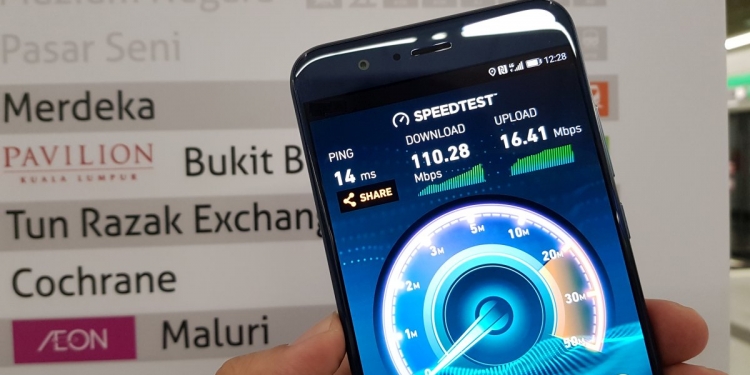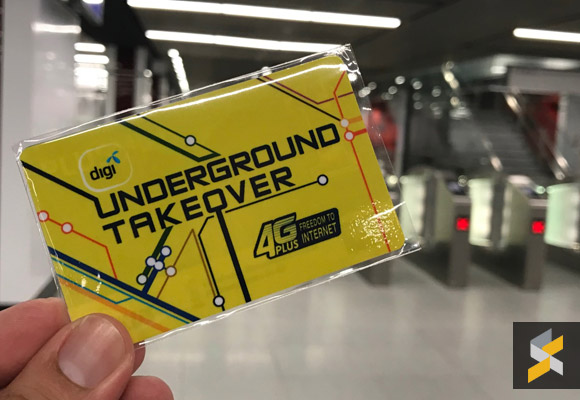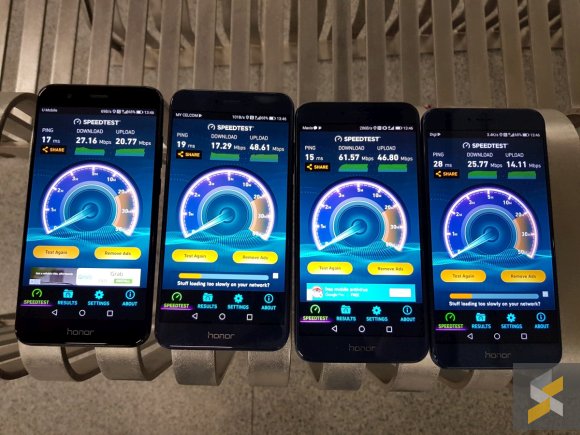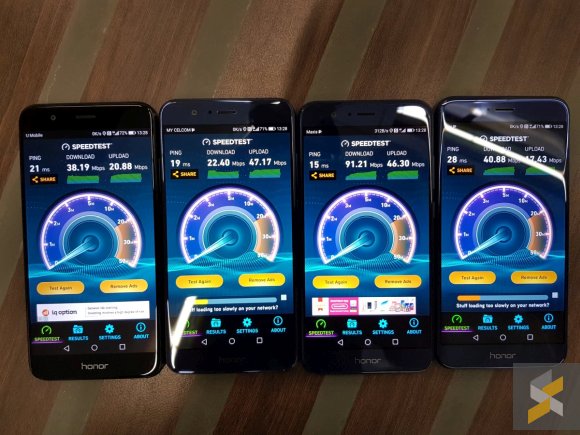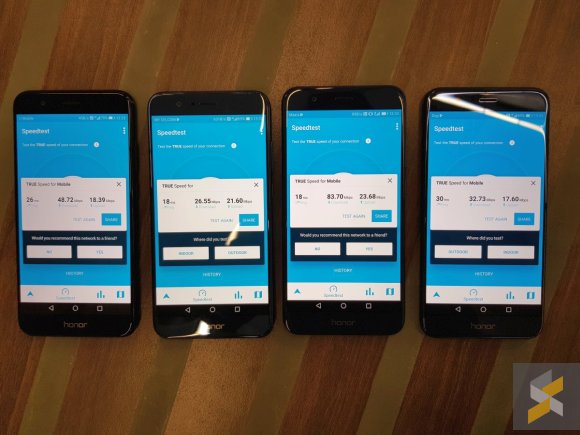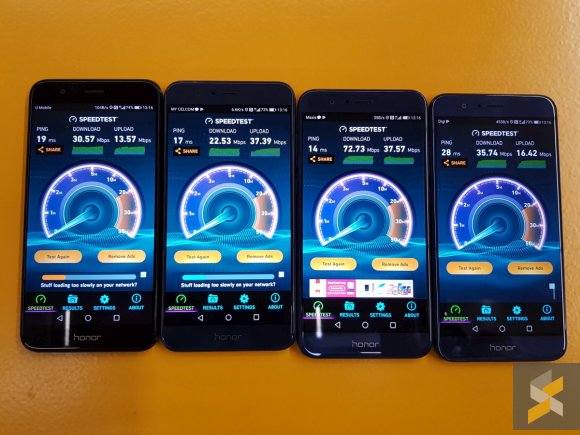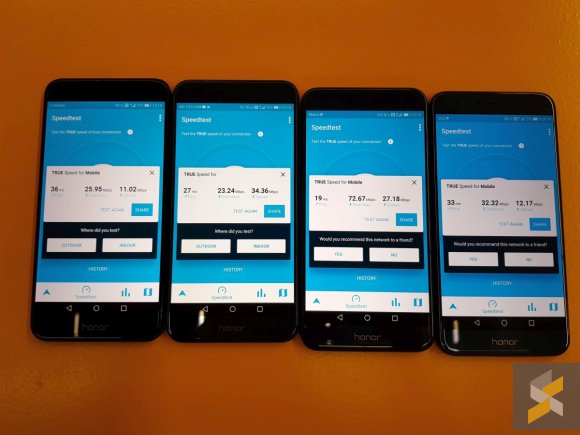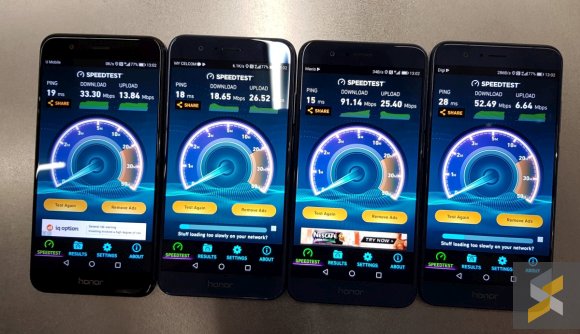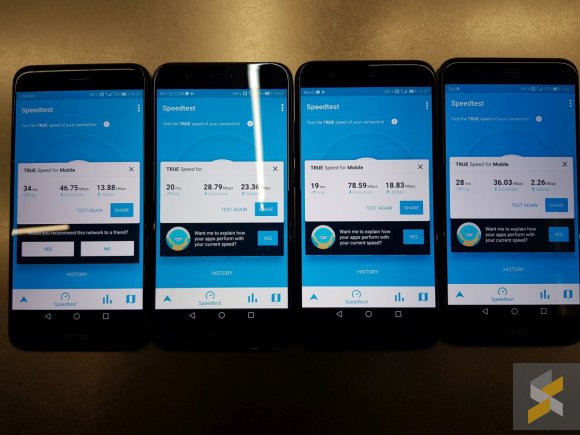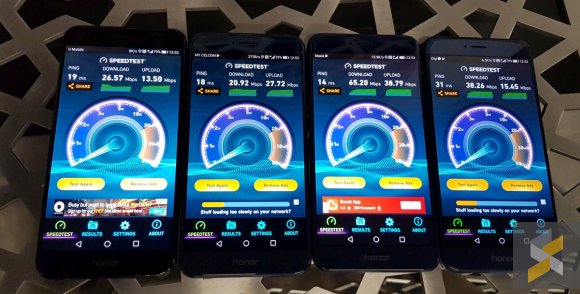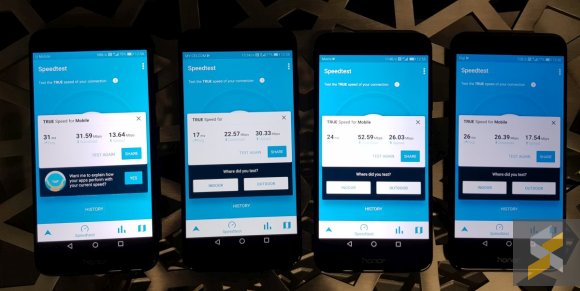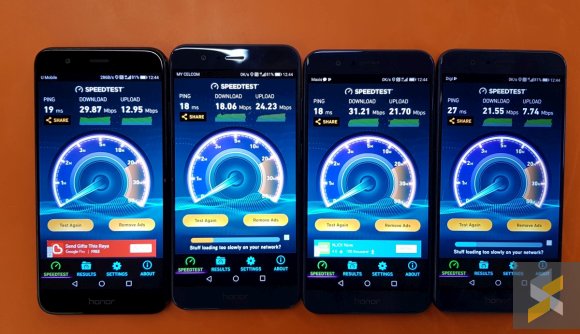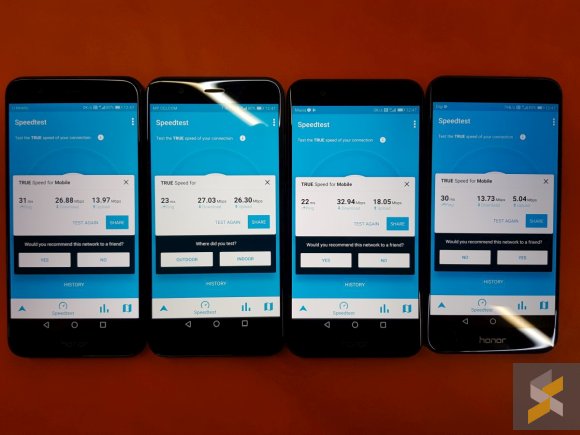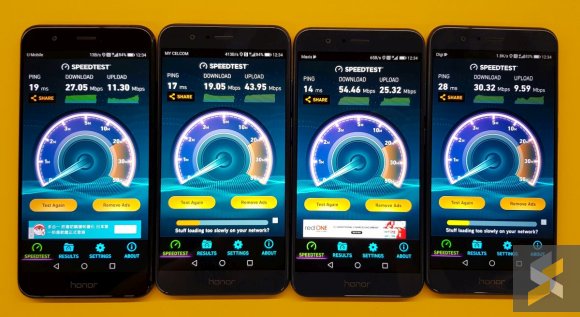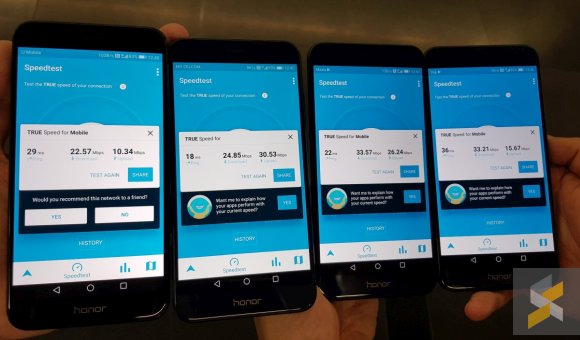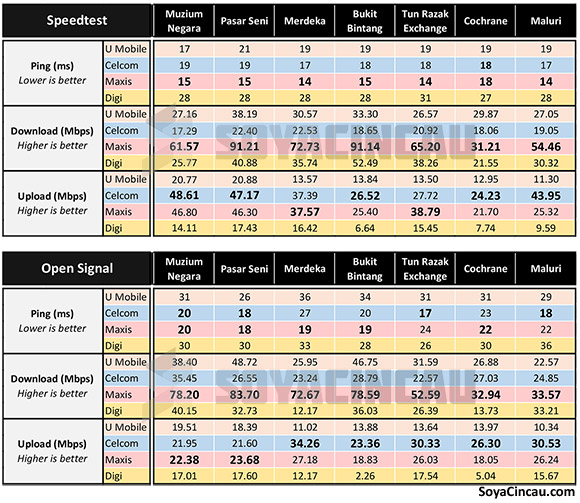The 2nd phase of the MRT Line 1 is now open and this includes an underground section that goes through the heart of KL city. When Digi invited us for a 4G Underground MRT challenge earlier this week, we thought why not we test out 4 of our big telcos in Malaysia? So we did.
For consistency, we used the honor 8 Pro for all 4 telcos – Celcom, Digi, Maxis and U Mobile. The device supports carrier aggregation so it can maximise each network’s potential if it’s supported. We used prepaid SIMs from each telco with sufficient high-speed quota to ensure that there’s no throttling during the test.
For network speed measurement, we have used Ookla’s Speedtest with Telekom Malaysia as the fixed server on all devices. On top of that, we also ran OpenSignal’s TRUE Speedtest which claims to reflect real speeds you get on a network. According to OpenSignal, these tests measure full end to end connectivity to servers like Google, Amazon and Akamai which supposedly reflect real world usage.
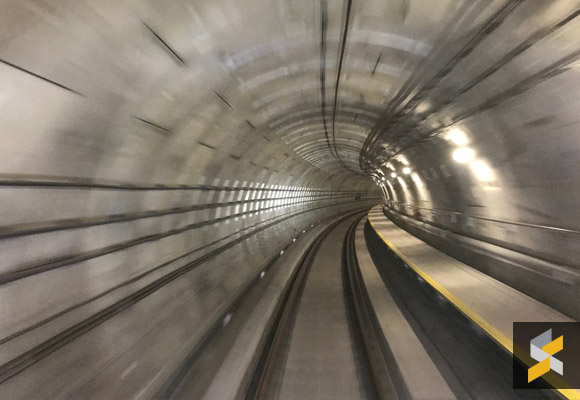
The test route covers 7 underground stations namely Muzium Negara, Pasar Seni, Merdeka, Bukit Bintang, Tun Razak Exchange, Cochrane and Maluri. The Tun Razak Exchange MRT station at 45m under ground is the deepest on the network, followed by Bukit Bintang at 33.4m deep.
According to the folks at Digi, users underground are connected on the 2600MHz spectrum and Digi works closely with the MRT project’s technology partner for its underground coverage. We’ve spoken to U Mobile as well and it seems that all telcos are working with the same partner which provides the wireless infrastructure. The key difference probably lies on how each telco optimises its network and resources.
Below is a snapshot of the Ookla (top) and OpenSignal (bottom) Speedtests arranged from left to right (U Mobile, Celcom, Maxis and Digi). You may click on each picture for a larger view.
Muzeum Negara
Pasar Seni
Merdeka
Bukit Bintang
Tun Razak Exchange
Cochrane
Maluri
Summary
On Ookla speedtest, Maxis is the highest among the 4 telcos with an average download speed of 66.79Mbps. This is followed by Digi at 35Mbps, U Mobile at 30.39Mbps and Celcom at 19.84Mbps. In terms of ping, Maxis has the best result with an average of 15ms. Of course, do take note that we’ve manually selected Telekom Malaysia for this test and the results by vary depending on which Speedtest server you’re on.
For Open Signal, Maxis is still holding the top spot with an average of 61.75Mbps for download but the second place goes to U Mobile at 34.41Mbps. Digi takes the 3rd spot with an average of 27.77Mbps, followed by Celcom closely at 26.93Mbps. Ping wise, both Maxis and Celcom performed rather well at 20.57ms and 20.42ms respectively.
It is also interesting to point out that occasionally Celcom performs the best in uploads as it records as high as 48.61Mbps on Ookla Speedtest and 34.26Mbps on Open Signal.
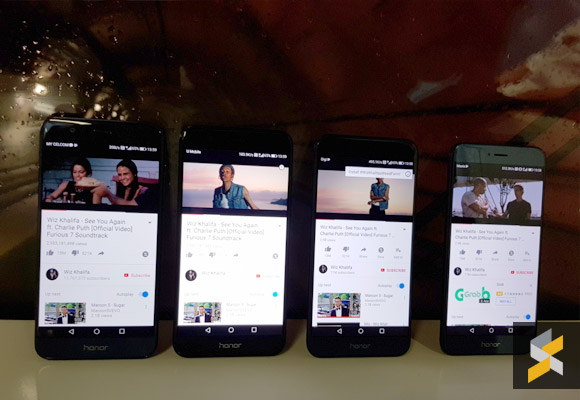
Despite the different numbers above, you should be able to enjoy great 4G experience end-to-end on the MRT with any of the four telcos. Apart from running speedtests, we’ve also managed to stream YouTube videos smoothly without buffering and it’s no surprise since all of them can do more than 20Mbps.
It’s good that we can enjoy high-speed connectivity on our MRT underground and it is definitely better than London’s Underground network where there’s hardly any mobile reception. Hopefully, our telcos and Rapid Rail can work together on delivering a similar 4G experience on our existing LRT lines. How’s your 4G experience so far on the MRT? Let us know in the comments below.

